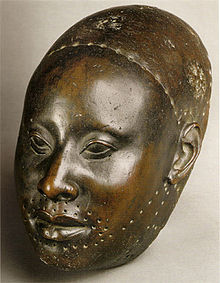| Revision as of 18:17, 14 July 2008 editBwjsmartdude (talk | contribs)551 editsNo edit summary← Previous edit | Revision as of 00:02, 15 July 2008 edit undoBwjsmartdude (talk | contribs)551 editsNo edit summaryNext edit → | ||
| Line 11: | Line 11: | ||
| ==References== | ==References== | ||
| {{Reflist}} | {{Reflist}} | ||
| {{Orisa-Ifá}} | |||
| ] | ] | ||
Revision as of 00:02, 15 July 2008

The Yoruba of South Western Africa (Benin Republic, Nigeria & Togo, also including parts of Ghana, Cameroon & Sierra Leone), has a very rich and vibrant artisan community, creating traditional and contemporary art. The custom of art and artisans among the Yoruba is deeply routed in Ifá literary corpus indicating the orishas Ogun, Obatala, Oshun and Obalufon as central to creation mythology including artistry (ie the art of humanity)
Over the years many have come to cross foreign ideas of artistry and contemporary art with the traditional art forms found in West Africa.
Commentary
The traditional art forms among the Yoruba include but not limited to; beading, braiding, tattooing, mogley-us clay and ceramic, bronze, weaving and dying, sculpting etc.
References
- "The Place of Susanne Wenger's Art in Yoruba Religion". Retrieved 2008-02-25.
| Yoruba religion (Orisa-Ifá) | |||||
|---|---|---|---|---|---|
| Spirits |
| ||||
| Countries of development | |||||
| Topics | |||||
| Sacred sites | |||||
| Legendary figures | |||||